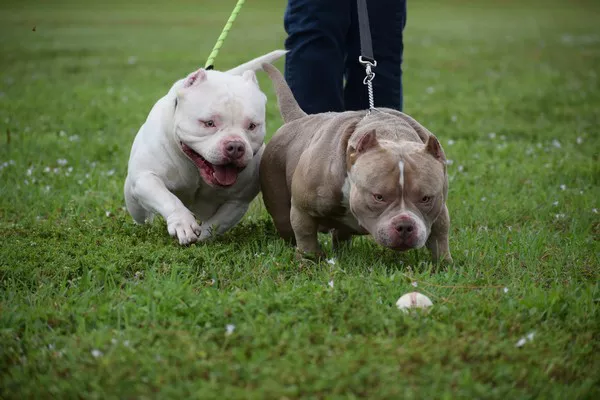Pocket Bullies are a relatively new breed of dog, so there is not a lot of information available about their lifespan. However, based on the lifespans of their parent breeds, it is estimated that Pocket Bullies can live for 11 to 13 years.
What Factors Affect the Lifespan of a Pocket Bully?
There are a number of factors that can affect the lifespan of a Pocket Bully, including:
Genetics: Pocket Bullies are a mixed breed, so they can inherit genetic conditions from their parents. Some of the most common genetic conditions that can affect Pocket Bullies include hip dysplasia, hypothyroidism, and skin fold dermatitis.
Diet: A healthy diet is essential for maintaining a Pocket Bully’s health and lifespan. Pocket Bullies should eat a diet that is high in protein and low in fat.
Exercise: Pocket Bullies need regular exercise to stay healthy and fit. A good rule of thumb is to give your Pocket Bully at least 30 minutes of exercise per day.
Vaccinations: Pocket Bullies should be vaccinated against common diseases, such as rabies, distemper, and parvovirus.
Regular Checkups: It is important to take your Pocket Bully to the veterinarian for regular checkups. This will allow the veterinarian to detect any health problems early on and recommend treatment.
How Can I Help My Pocket Bully Live a Long and Healthy Life?
There are a number of things you can do to help your Pocket Bully live a long and healthy life, including:
Choose a reputable breeder: When choosing a Pocket Bully puppy, it is important to choose a reputable breeder. A reputable breeder will screen their breeding stock for genetic diseases and will raise their puppies in a healthy environment.
Provide a healthy diet: Pocket Bullies should eat a diet that is high in protein and low in fat. You should also avoid feeding your Pocket Bully table scraps.
Get your Pocket Bully vaccinated: Pocket Bullies should be vaccinated against common diseases, such as rabies, distemper, and parvovirus.
Take your Pocket Bully for regular checkups: It is important to take your Pocket Bully to the veterinarian for regular checkups. This will allow the veterinarian to detect any health problems early on and recommend treatment.
Provide plenty of exercise: Pocket Bullies need regular exercise to stay healthy and fit. A good rule of thumb is to give your Pocket Bully at least 30 minutes of exercise per day.
Be a responsible owner: Pocket Bullies are loving and loyal dogs, but they can also be destructive if they are not properly trained. It is important to be a responsible owner and to train your Pocket Bully from a young age.
By following these tips, you can help your Pocket Bully live a long and healthy life.
Additional Information
The American Pocket Bully Association: The American Pocket Bully Association is a non-profit organization that is dedicated to the advancement of the Pocket Bully breed. The association provides information about Pocket Bullies, including their history, health, and care.
The Pocket Bully Club of America: The Pocket Bully Club of America is a national organization that is dedicated to the promotion of the Pocket Bully breed. The club offers a variety of resources for Pocket Bully owners, including educational materials, training programs, and social events.
The Pocket Bully Handbook: The Pocket Bully Handbook is a comprehensive guide to the Pocket Bully breed. The handbook covers topics such as Pocket Bully history, breeding, training, and health care.
Conclusion
Pocket Bullies are a relatively new breed of dog, but they have quickly become popular pets. Pocket Bullies are known for their friendly and affectionate temperaments. They are also relatively easy to care for, making them a good choice for first-time dog owners. With proper care, Pocket Bullies can live for 11 to 13 years.


